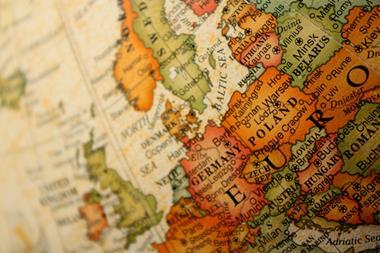Martin Steward on why investors should not allow diminished tail risks at home to lead to complacency about the “synchronising economics” of the world at large.
In my comment piece last January, I argued that falling corporate profits could pose a 20% downside risk to equity valuations during 2012. As I write now, it seems they are more likely to finish the year up 10% or more.
But back in Q2 it seemed I had made a decent call: between mid-March and the beginning of June, global equities dropped more than 12%. That was probably thanks to the slowdown in China’s GDP growth recorded for Q1 – but earnings reports didn’t help. The Q1 season was not too bad; Q2 and Q3’s figures were weak – and sales were particularly bad. Investors are savaging yesterday’s IT darlings.
The two things are related, of course. Today, when China slows down, factories around the world start churning out fewer goods. The Bundesbank’s downgrading of Germany’s growth outlook tells the story. Just as stark are data from the US Institute of Supply Management: November’s PMI fell to 49.5 – its lowest level since July 2009 – and manufacturing exports registered a sixth straight month of contraction. Manufacturing jobs are being lost, too: that index registered 48.4%, its lowest since September 2009. How resilient can the US housing market recovery and its wealth effect be in the absence of jobs? What would that mean for corporate earnings?
But the Q4 wobble in equity markets seems more to do with the US ‘fiscal cliff’ than with global growth, and that could be missing the global picture. As Damien Miller of Alcentra put it at the IPE Awards Seminar in Copenhagen: “There is a strong argument for us turning over in the earnings cycle, and people will turn their attention to this in Q1 once we are through the euphoria of avoiding the fiscal cliff.”
Indeed, when the audience voted on the big issues of the day, 80% said the cliff would be avoided. But they were less certain that China would meet its growth target for 2013: 43% said it would fail. The other 57% may be expecting sentiment to turn as weak end-2011 figures become the base for new growth numbers and new capital spending and monetary loosening begins to tell. Loan growth, bond issuance and off-balance-sheet credit creation has strengthened – so someone is borrowing money to do something in China.
Nonetheless, growth slowed for seven consecutive quarters into Q3, industrial inventories are swollen, and both consumption and demand for manufacturing labour is slowing. Even the recently improved trade surplus is down to weak imports, not strong exports.
If you are in the 43%, you need to consider what that means, not just for China or emerging markets but for the world. The interviewees in our Investing in Emerging Markets features increasingly discuss their investments in a global context. That works both ways: understanding emerging markets is essential even for investors with little direct exposure.
‘Tail risks’ in the developed world can tempt us to look favourably on EMs that seem to have consigned theirs to history. But these economies still experience old-fashioned cycles, and when they provide marginal demand in a globalised world those cycles can have significant impact. Investors shouldn’t let relief at diminished tail risks at home breed complacency about the synchronising economics of the world at large.
This comment piece was first published in the January issue of IPE magazine.














No comments yet